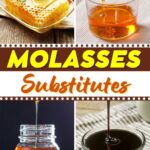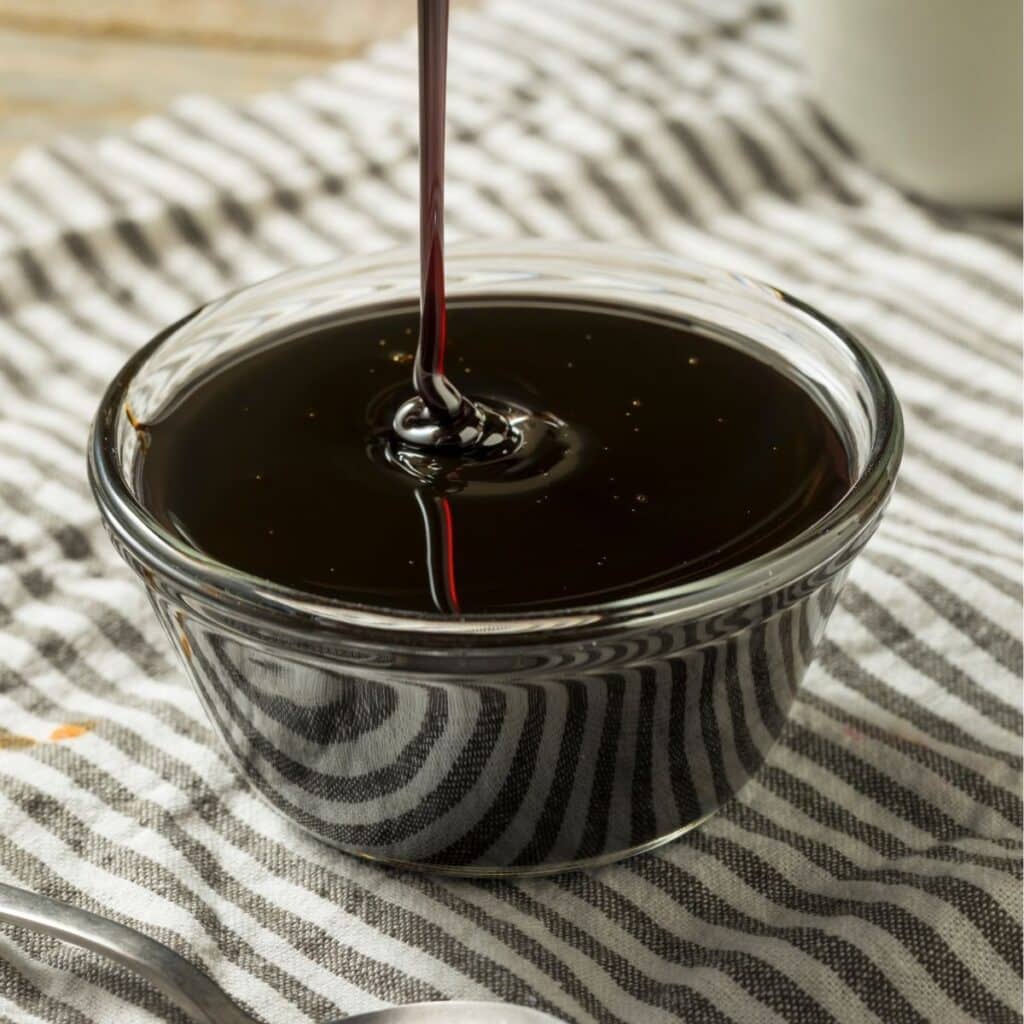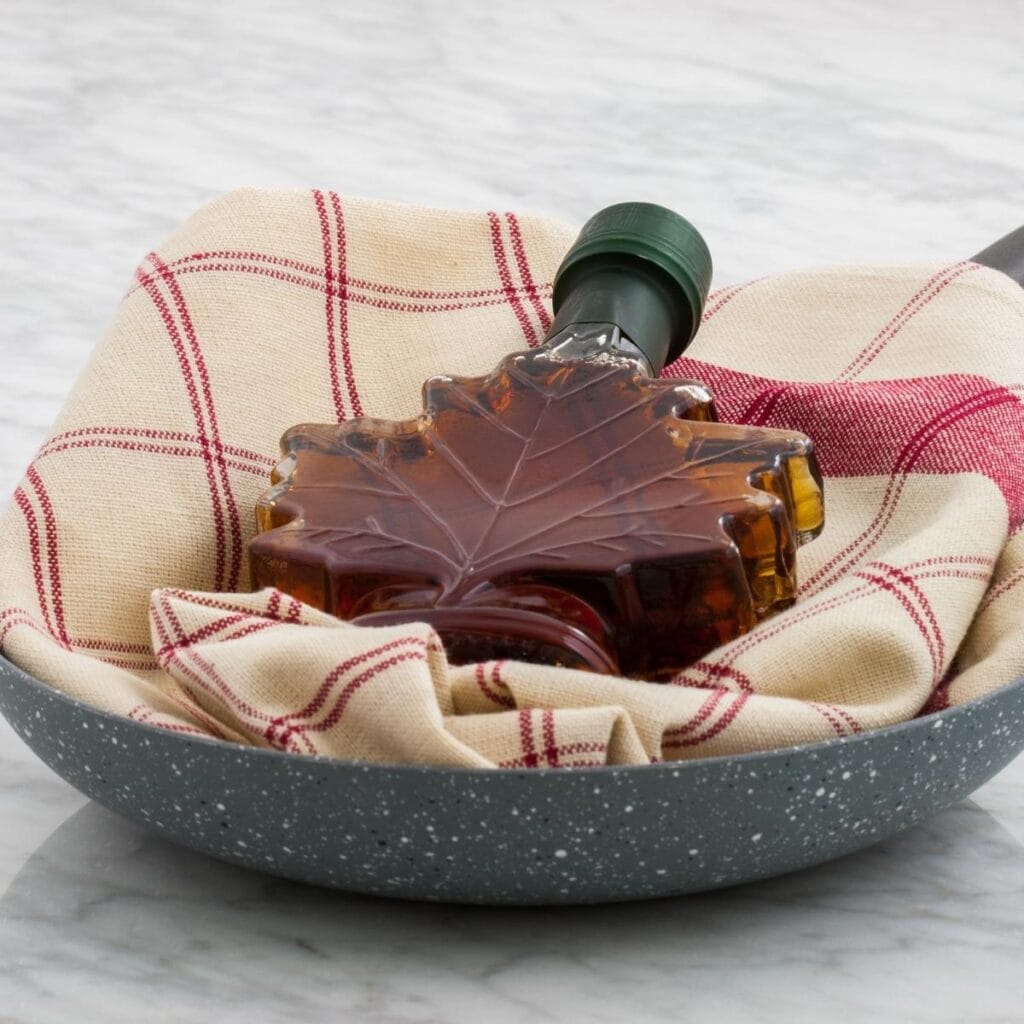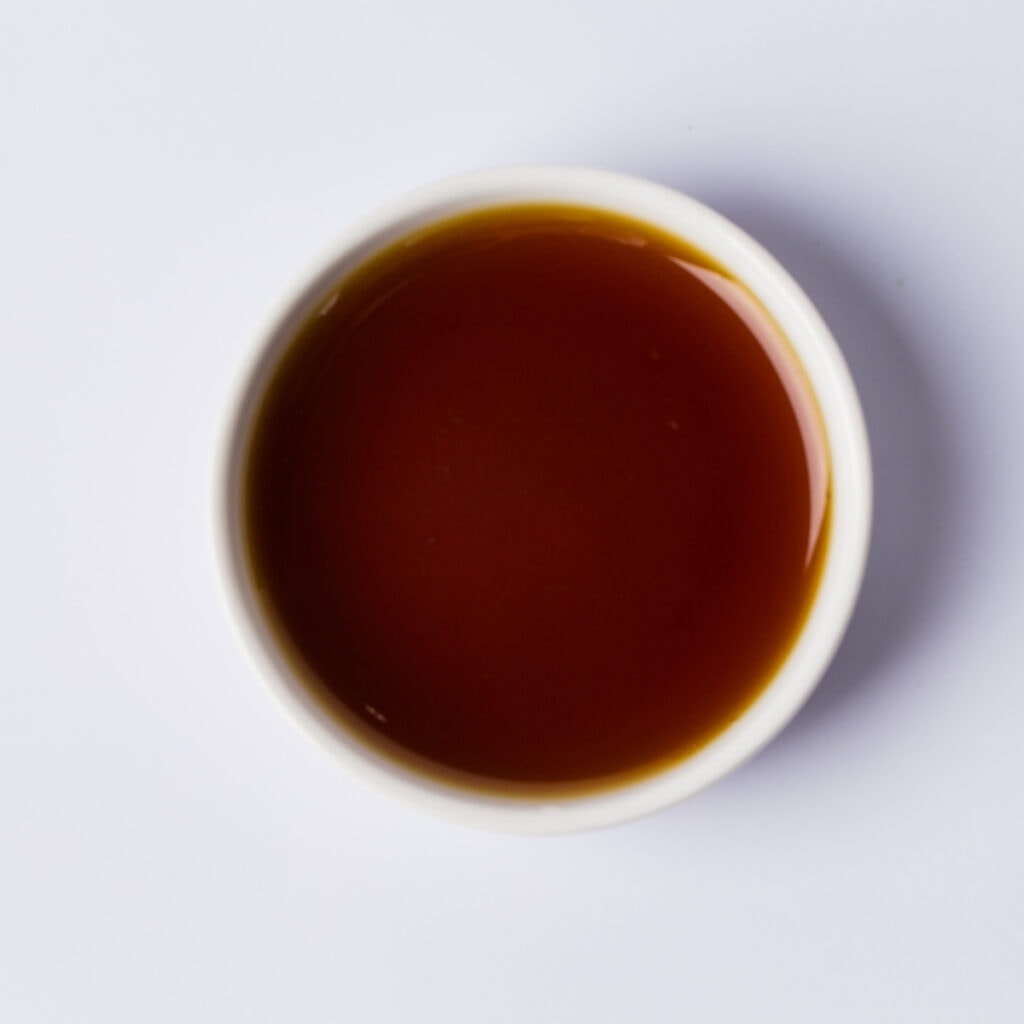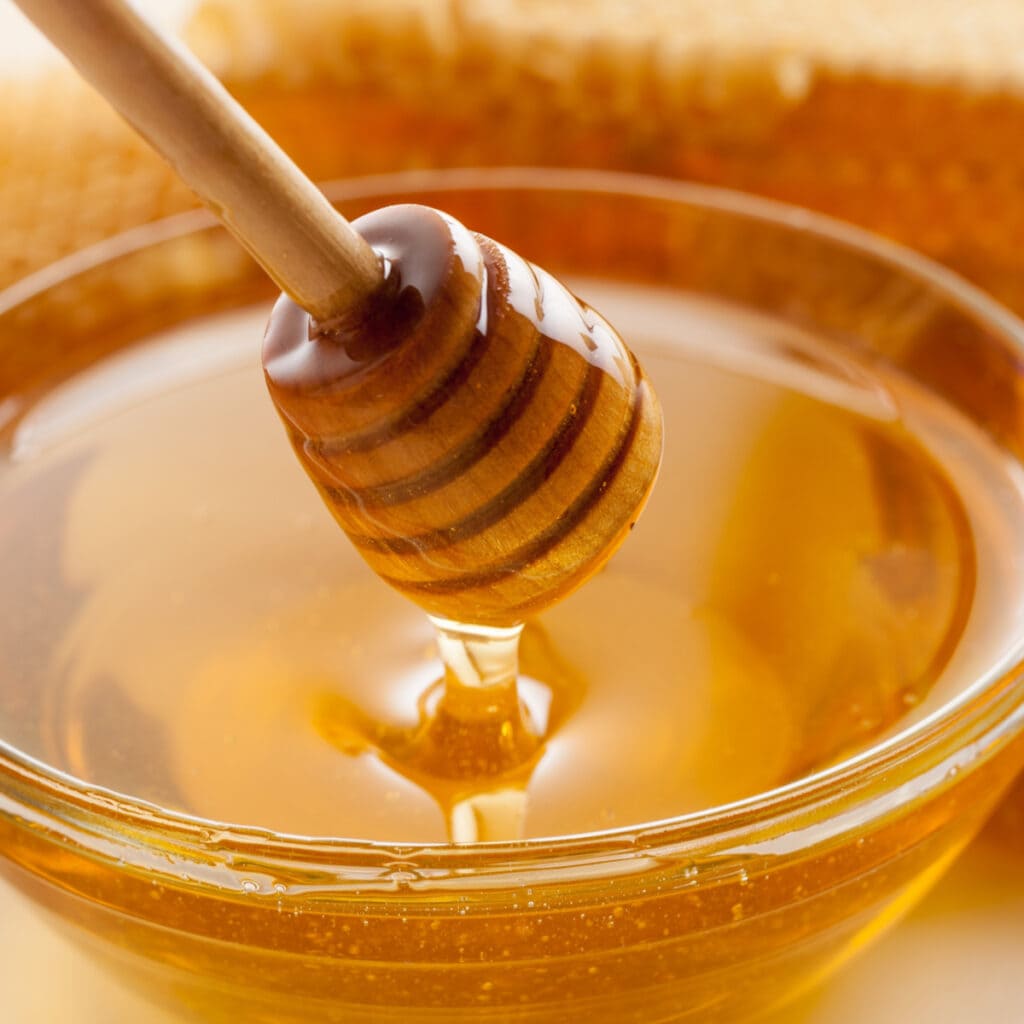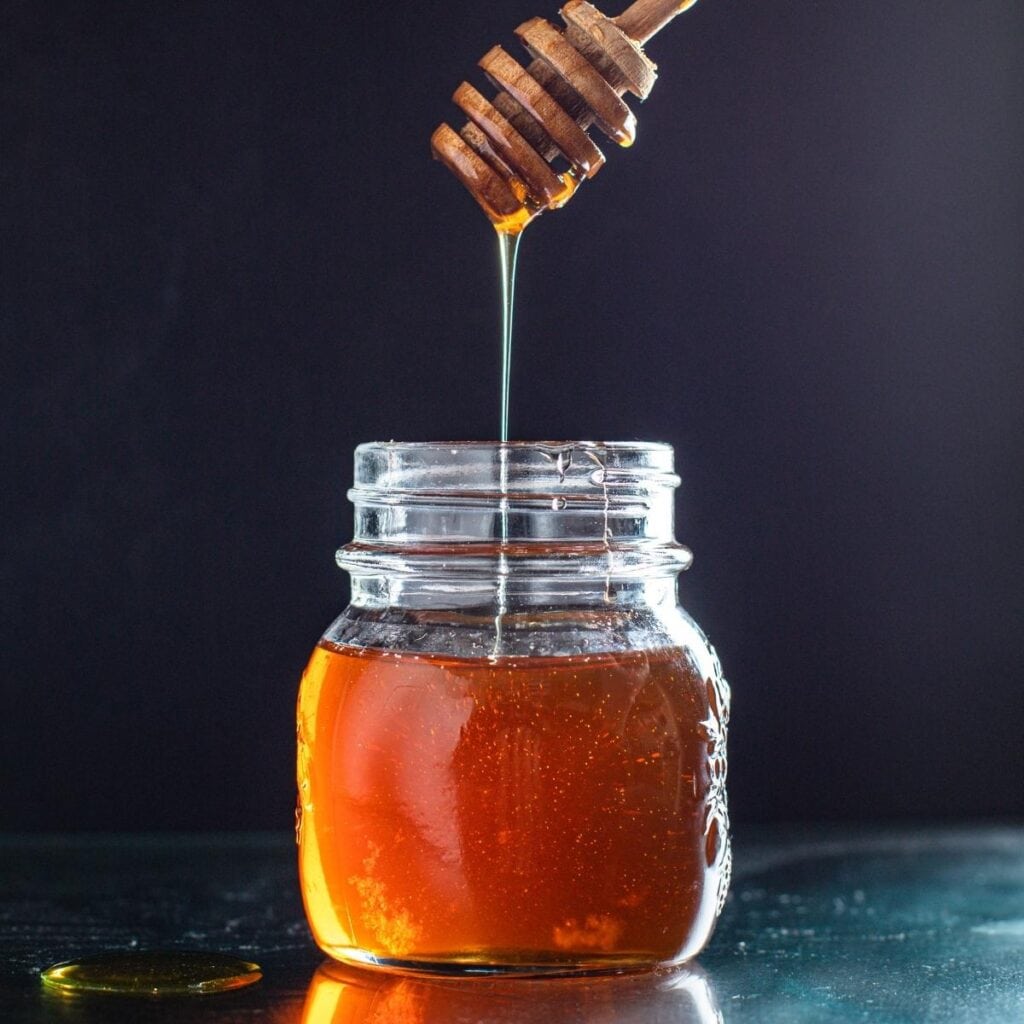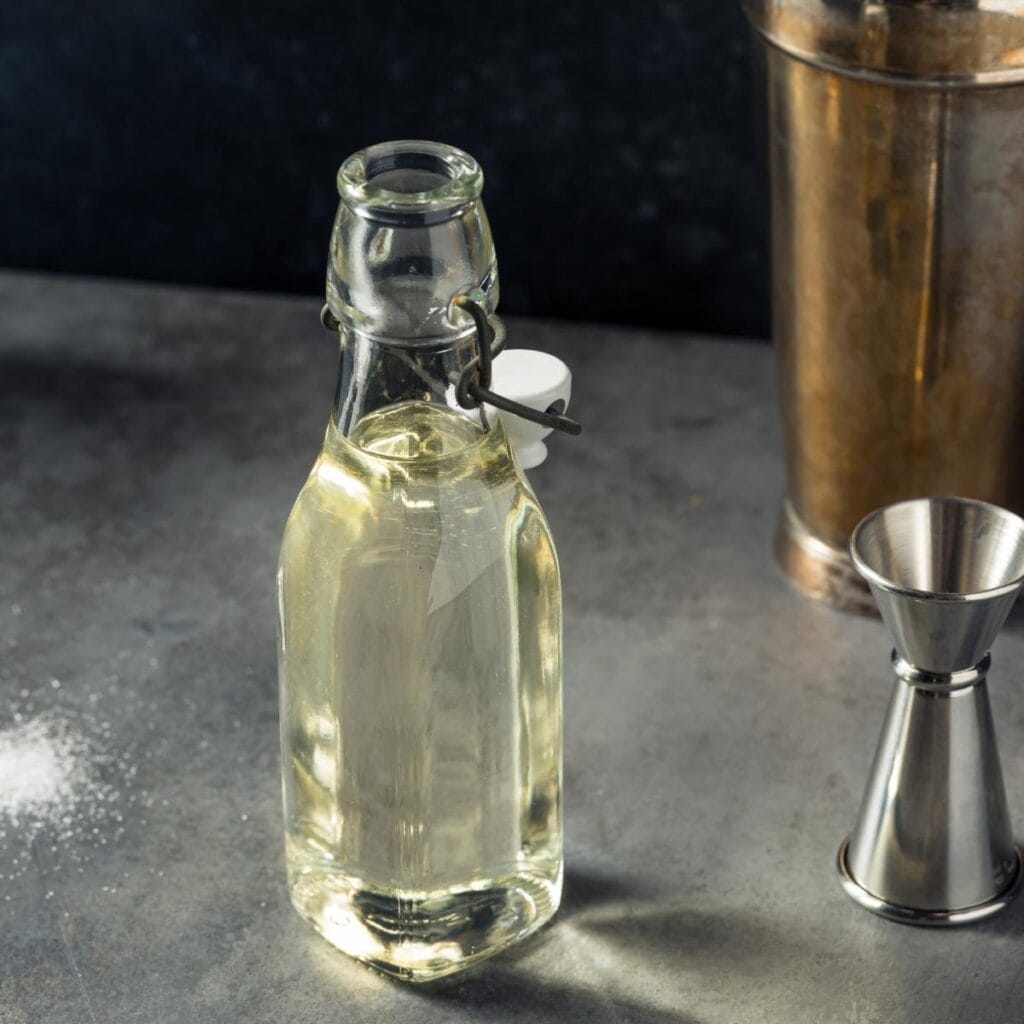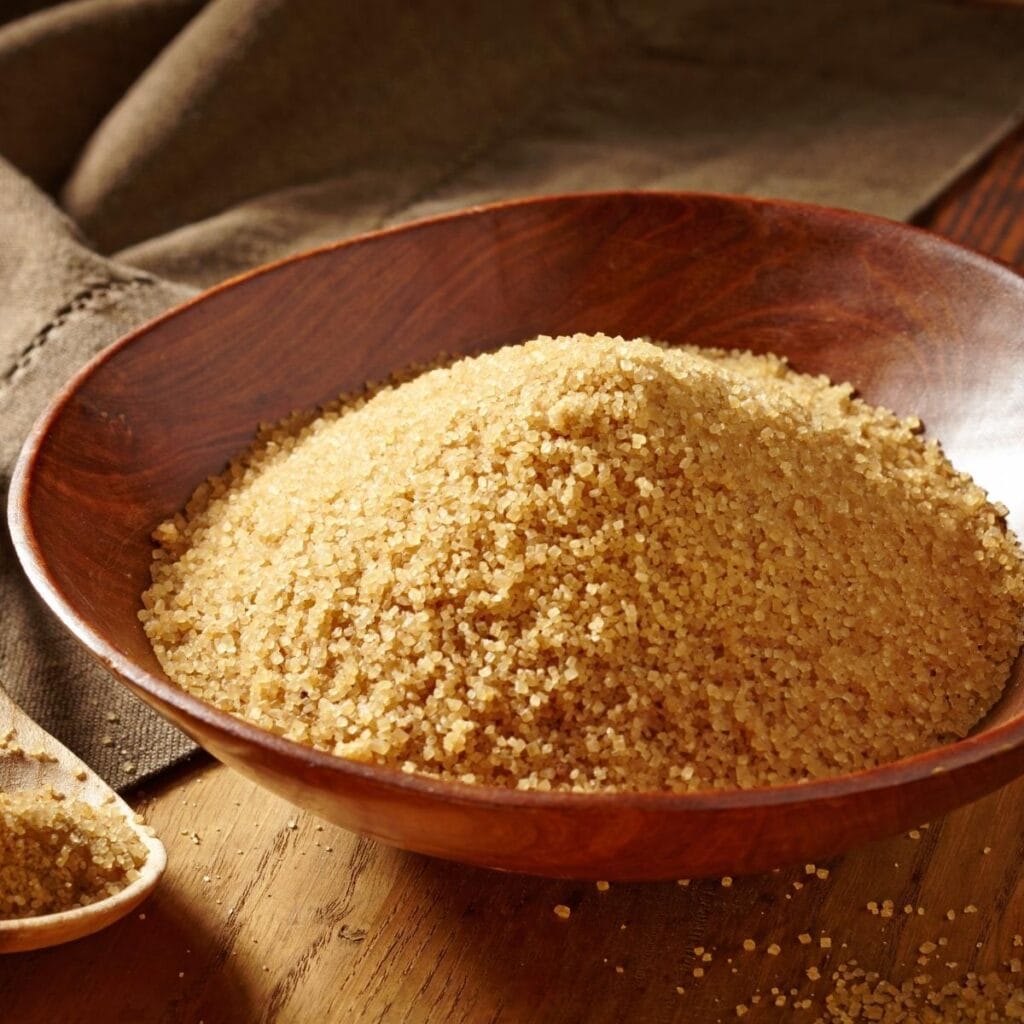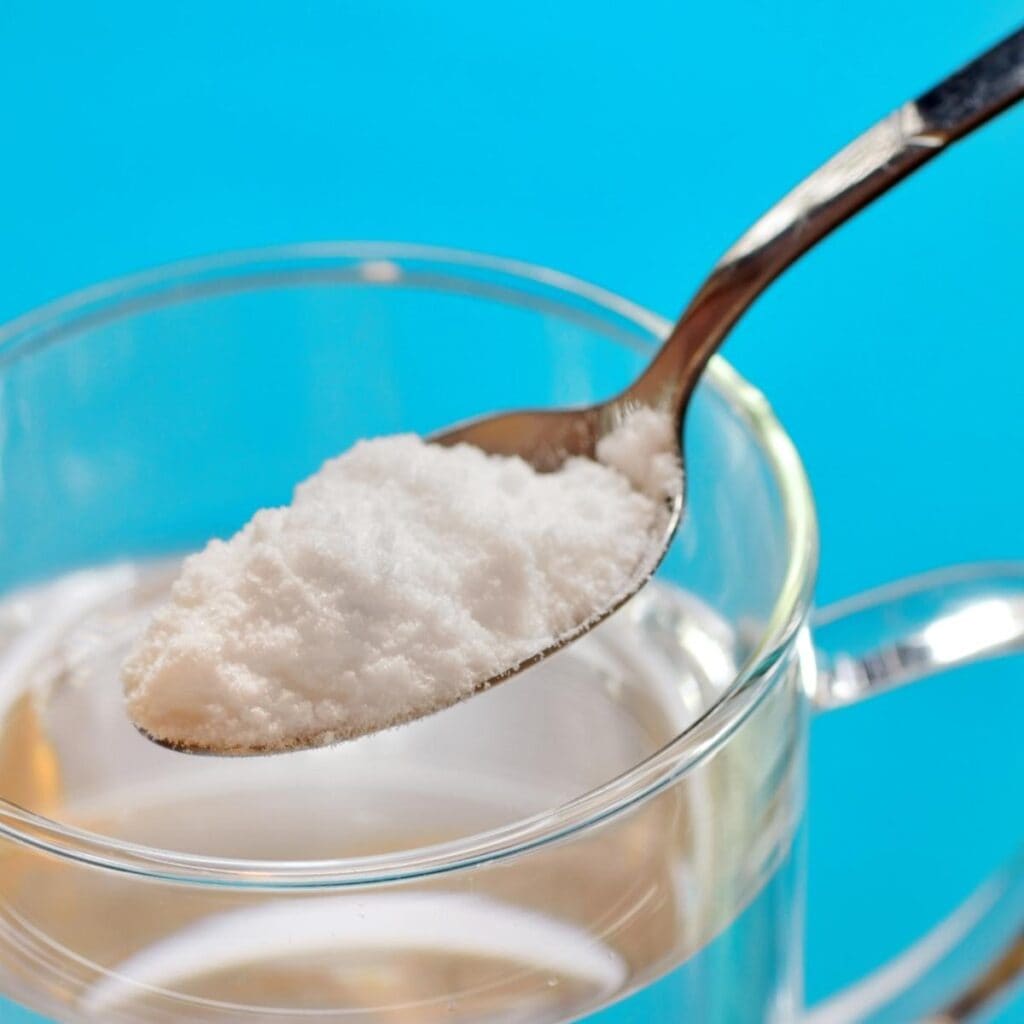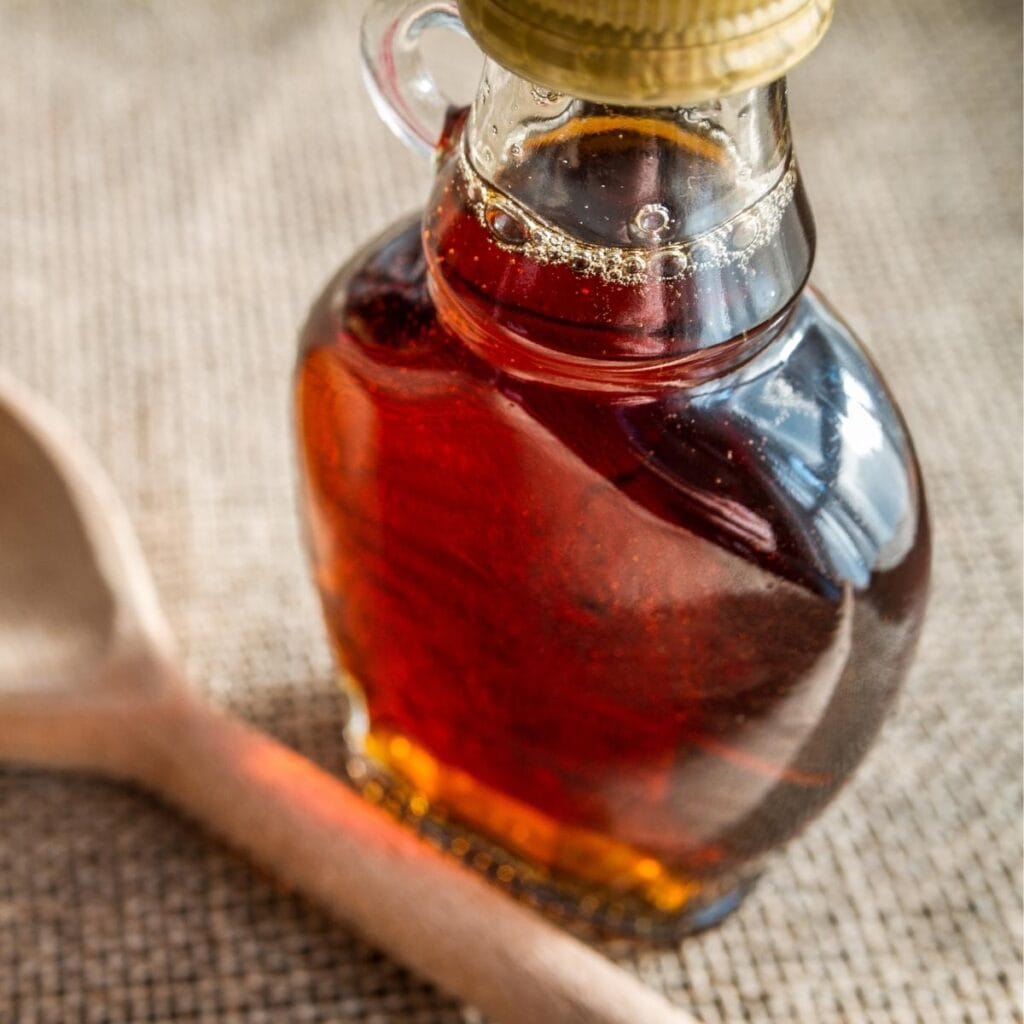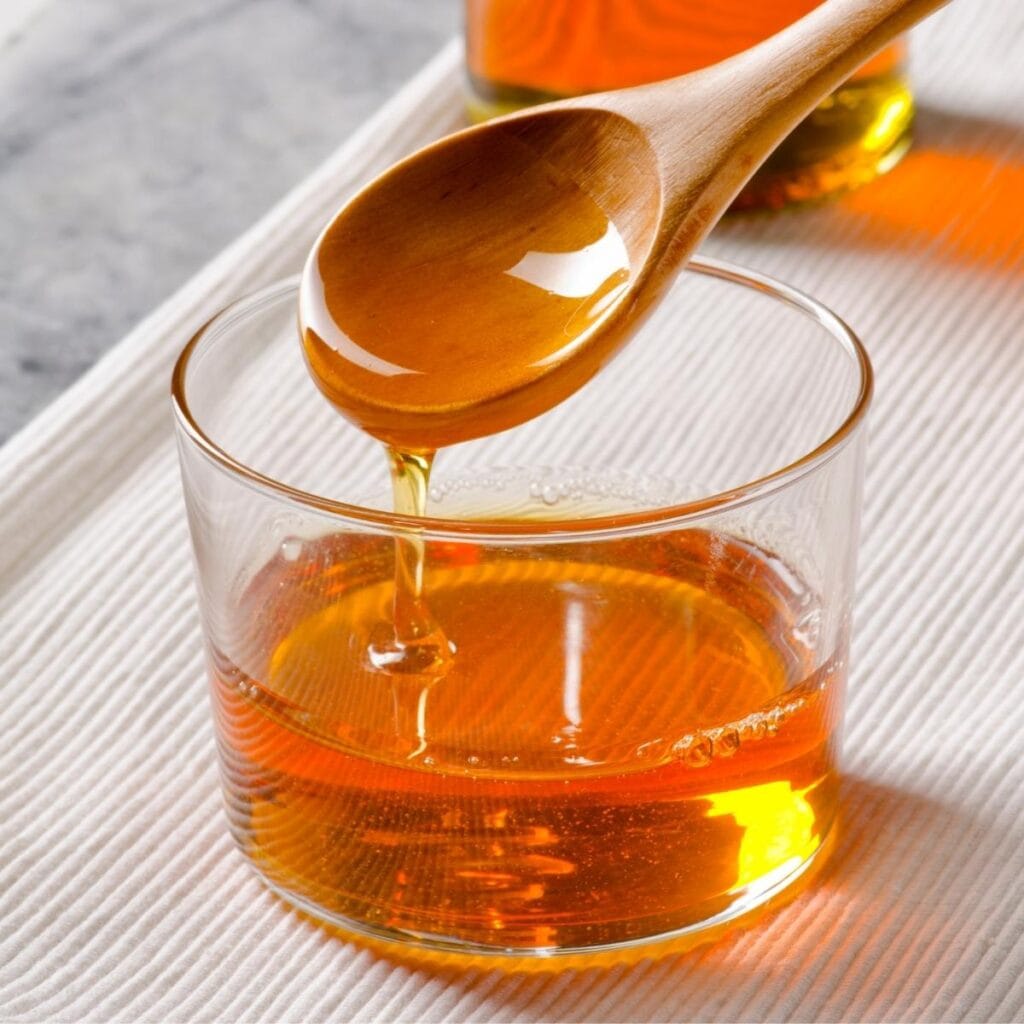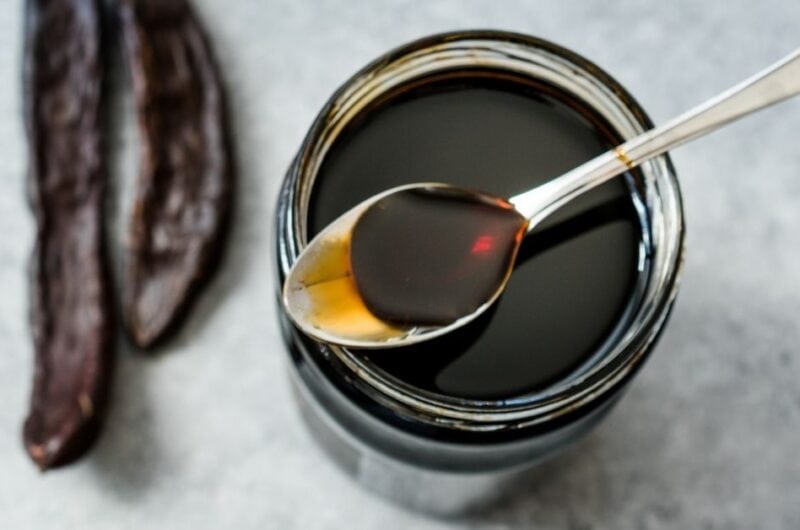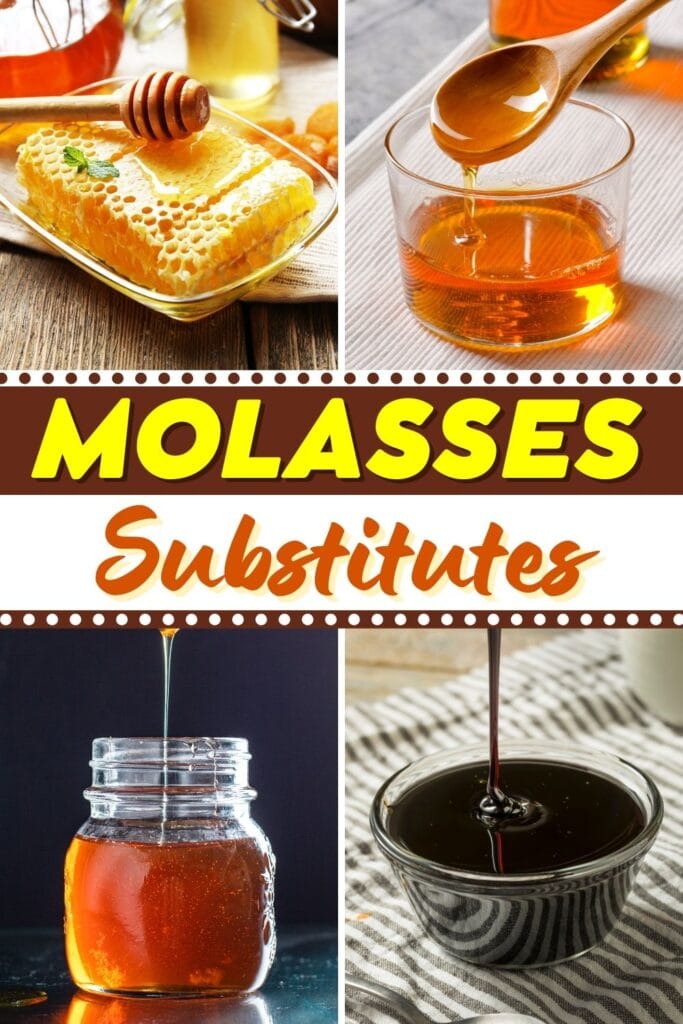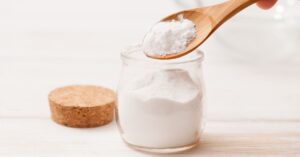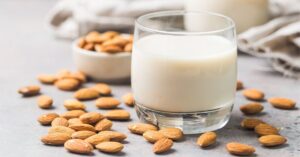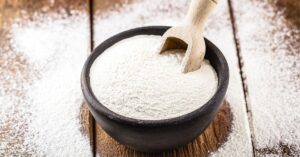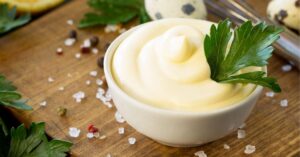Did you know that molasses is simply a by-product of the sugar-making process? In granulated sugar production, the extra juice is extracted from the plant, boiled, and turned into thick molasses. You’ll need molasses if you’re baking your way through your grandma’s Betty Crocker cookbook. If you don’t have a bottle in your pantry (you’re not alone), molasses substitutes are quick and easy. Most molasses substitutes call for sugar (and a few extra steps) to capture that rich, caramel goodness!
1. Maple Syrup
Maple syrup doesn’t have the same flavor profile as molasses, but that’s not necessarily bad. It has a similar rich brown color and consistency, making it a good 1:1 swap. When opting for maple syrup, be sure to use a dark syrup. Aunt Jemima is fine on pancakes, but it doesn’t have the same dark, nutty flavor as pure maple syrup. It works in a pinch (since it’s very similar to corn syrup), but it doesn’t have the same depth of flavor.
2. Dark Corn Syrup
If you have dark corn syrup in your cabinets, you’re back in business! Dark corn syrup gets that rich dark color from, you guessed it, molasses. It has a base of light corn syrup and adds a particular type of molasses for color. It’s important to note that using dark corn syrup is milder than molasses. It’s a great swap to keep your bakes consistent, but the flavor is very soft. To infuse extra flavor into your bakes, try and use a blend of dark corn syrup with something packed with flavor (such as maple syrup or honey).
3. Honey
The local bee guy gave me the rundown on honey at a local farmer’s market. I learned that the flavor profile of honey changes based on the flowers used to gather nectar. Buckwheat honey, for example, is much darker (almost the same hue as molasses) and has a very similar flavor profile. If you don’t have dark honey, any honey works in a pinch. Opting for dark honey adds that rich, caramel flavor found in molasses. Light honey works just as well and won’t affect the consistency of your dessert. Honey has a very similar consistency to molasses, which means you can use it as a 1:1 ratio for a simple swap.
4. Golden Syrup
Golden syrup is more similar to honey in its consistency but has the same caramel-like flavor profile. You can pick up golden syrup at the store or make your own at home! Making golden syrup is similar to making caramel but much easier. Place the sugar and water on the stove, and bring it to a boil. Once the juice in your sugar evaporates, it transforms into a thick, golden syrup. Golden syrup has a similar consistency, but the flavor is much less subtle than molasses.
5. Simple Syrup
Simple syrup is a functional replacement that won’t impart much flavor. Boil water and sugar to recreate that thick, sweet syrup. It has a similar sweetness compared to molasses but lacks caramel and bitter notes. To amp up the flavor, infusing your simple syrup is simple and allows you to get creative with your baking. Adding vanilla, brown sugar, or cinnamon to your sugar base is a great way to incorporate some extra flavor. Plus, you can make a big batch of infused simple syrup and store it in the fridge. Add it to desserts, or throw it in your morning cup of coffee.
6. Brown Sugar
Brown sugar is granulated sugar with added molasses that make it dense and sticky. It’s a great way to capture that molasses flavor if you don’t have a bottle in your kitchen. When using brown sugar as a replacement, it’s important to note that it’s not a 1:1 ratio. If your recipe calls for 1 cup of molasses, use ¾ cup brown sugar. For an amplified molasses kick, always opt for dark brown sugar. Dark brown sugar has a higher molasses content, imparting more caramel flavor to your bakes. Light brown sugar works in a pinch, but the flavors are more subtle.
7. Granulated Sugar & Water
Are you in a hurry? Sugar and water work well if you don’t have maple syrup or honey. If your recipe calls for 1 cup molasses, stir ¾ cup sugar with ¼ cup of water. This mixture imparts the right amount of sweetness and moisture content that functionally acts as molasses. The downside of this simple swap is there isn’t much flavor. It may lend the sweetness to your bakes, but it lacks that flavorful punch found in molasses.
8. Sorghum Syrup
Sorghum grains are packed with nutrition and are an excellent gluten-free alternative. Sorghum syrup production is very similar to molasses. The stacks of the sorghum plant are squeezed of their juices and then boiled into a syrup. The finished product is sweeter than molasses and is slightly sour. It’s also a little thinner than molasses but still behaves just as well in your bakes. Since it’s much sweeter than molasses, you may need to slightly adjust the sugar content in your recipe to avoid a sickening-sweet dessert!
9. Treacle
In many recipes, treacle and molasses are interchangeable. Treacle is very similar to molasses in that it is processed and has a similar color and consistency. The most significant difference between the two boils down to taste. Treacle is much sweeter than molasses and doesn’t have the same bittersweet undertones. Light treacle is a better substitute for things like light corn syrup and honey, while dark treacle is better for molasses.
10. Agave
Agave has the same thickness as molasses, making it an easy technical swap if you have it on hand. However, agave is much sweeter than even granulated sugar, so you may need to adjust your recipe. To ensure that your desserts aren’t overly sweet, reduce the added sugar when using agave syrup. If the recipe calls for 1 cup of graduated sugar, start with only ½ cup. Taste your mixture (as long as there are no raw eggs!) and add more sugar. Click on a star to rate it!
Average rating 5 / 5. Vote count: 2 No votes so far! Be the first to rate this post.
Share on social media: Let us improve this post!

